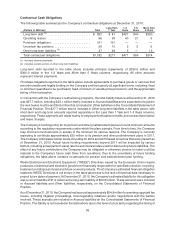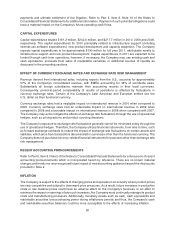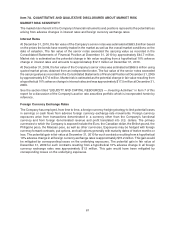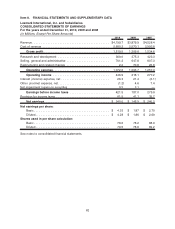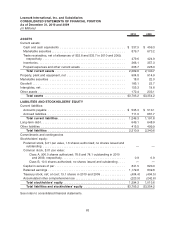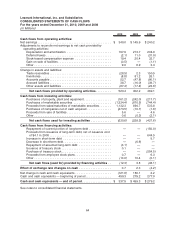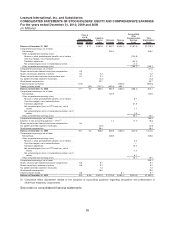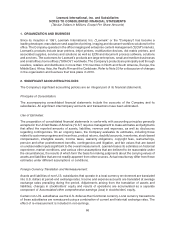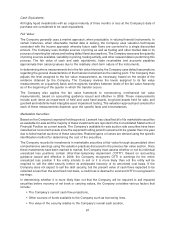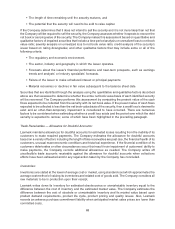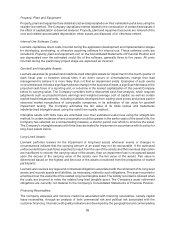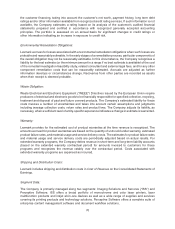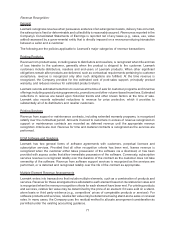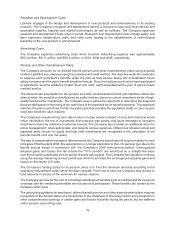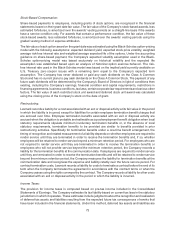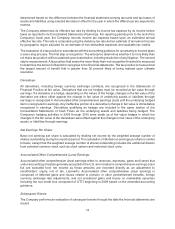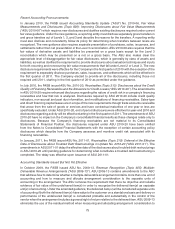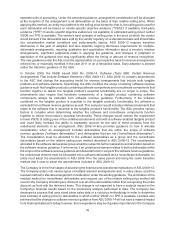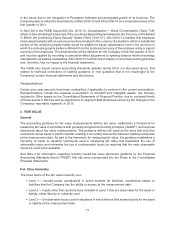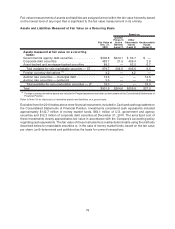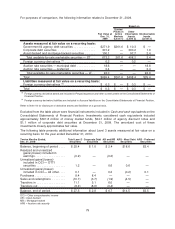Lexmark 2010 Annual Report Download - page 75
Download and view the complete annual report
Please find page 75 of the 2010 Lexmark annual report below. You can navigate through the pages in the report by either clicking on the pages listed below, or by using the keyword search tool below to find specific information within the annual report.Property, Plant and Equipment:
Property, plant and equipment are stated at cost and depreciated over their estimated useful lives using the
straight-line method. The Company capitalizes interest related to the construction of certain fixed assets if
the effect of capitalization is deemed material. Property, plant and equipment accounts are relieved of the
cost and related accumulated depreciation when assets are disposed of or otherwise retired.
Internal-Use Software Costs:
Lexmark capitalizes direct costs incurred during the application development and implementation stages
for developing, purchasing, or otherwise acquiring software for internal use. These software costs are
included in Property, plant and equipment, net, on the Consolidated Statements of Financial Position and
are depreciated over the estimated useful life of the software, generally three to five years. All costs
incurred during the preliminary project stage are expensed as incurred.
Goodwill and Intangible Assets:
Lexmark assesses its goodwill and indefinite-lived intangible assets for impairment in the fourth quarter of
each fiscal year or between annual tests if an event occurs or circumstances change that lead
management to believe it is more likely than not that an impairment exists. Examples of such events
or circumstances include a significant adverse change in the business climate, a significant decrease in the
projected cash flows of a reporting unit, or a decline in the market capitalization of the overall Company
below its carrying value. The Company considers both a discounted cash flow analysis, which requires
judgments such as projected future earnings and weighted average cost of capital, as well as certain
market-based measurements, including multiples developed from trading stock prices and prices paid in
observed market transactions of comparable companies, in its estimation of fair value for goodwill
impairment testing. The Company estimates the fair value of its trade names and trademarks
indefinite-lived intangible asset using the relief from royalty method.
Intangible assets with finite lives are amortized over their estimated useful lives using the straight-line
method. In certain instances where consumption could be greater in the earlier years of the asset’s life, the
Company has selected, as a compensating measure, a shorter period over which to amortize the asset.
The Company’s intangible assets with finite lives are tested for impairment in accordance with its policy for
long-lived assets below.
Long-Lived Assets:
Lexmark performs reviews for the impairment of long-lived assets whenever events or changes in
circumstances indicate that the carrying amount of an asset may not be recoverable. If the estimated
undiscounted future cash flows expected to result from the use of the assets and their eventual disposition
are insufficient to recover the carrying value of the assets, then an impairment loss is recognized based
upon the excess of the carrying value of the assets over the fair value of the assets. Fair value is
determined based on the highest and best use of the assets considered from the perspective of market
participants.
Lexmark also reviews any legal and contractual obligations associated with the retirement of its long-lived
assets and records assets and liabilities, as necessary, related to such obligations. The asset recorded is
amortized over the useful life of the related long-lived tangible asset. The liability recorded is relieved when
the costs are incurred to retire the related long-lived tangible asset. The Company’s asset retirement
obligations are currently not material to the Company’s Consolidated Statements of Financial Position.
Financing Receivables:
The Company assesses and monitors credit risk associated with financing receivables, namely capital
lease receivables, through an analysis of both commercial risk and political risk associated with the
customer financing. Internal credit quality indicators are developed by the geographical unit contemplating
69


